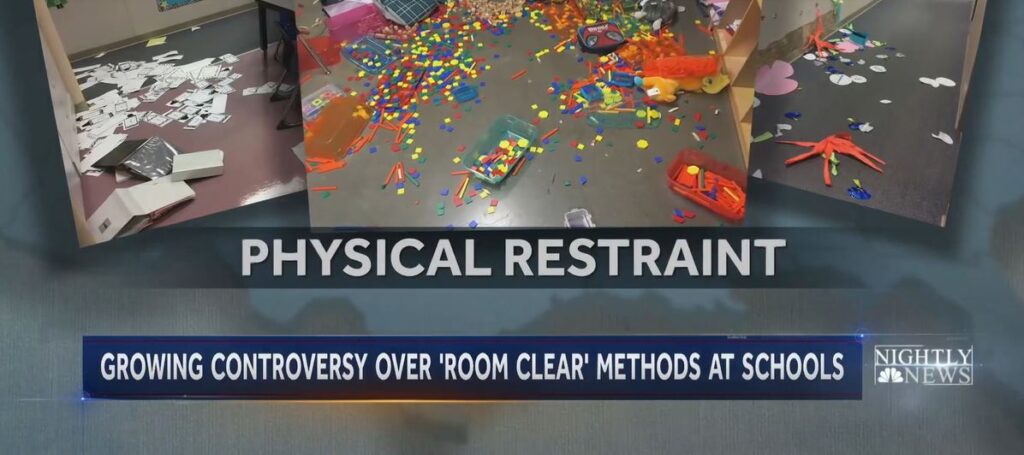Virginia schools soon could have a new set of regulations governing the use of seclusion and restraint of students. The regs are awaiting approval by Governor Ralph Northam, an official with Virginia’s department of special education and student services told lawmakers Wednesday, as reported by VPM news.
The state needs standards for the use of these disciplinary methods, elaborated retiring Del. Richard “Dickie” Bell, R-Staunton, because there are no standards now. Bell, a retired high school special education teacher, championed the legislation requiring the Virginia Board of Education to restrict methods deemed “unsafe.” The board voted in July to ban the use of prone, or face-down, restraint in July.
No one wants teachers and staff using disciplinary methods that are unnecessarily harsh or potentially harmful — even to quell students acting violently. However, someone needs to think through the implications of these regulations in a school environment were emotionally unstable children are being mainstreamed. Virginia’s dominant media outlets don’t talk about this issue. Thankfully, we have Bacon’s Rebellion, and Bacon’s Rebellion has the Internet.
For a peak at the likely unintended consequences, look to Oregon…
Fifty-six percent of surveyed teachers and parents in the state have reported a “room clear” in their child’s classroom over the past year. What’s a room clear? It’s when a student gets out of control, threatening violence and/or trashing the classroom and, rather than confront the child physically, teachers clear the classroom of the other students until the rampaging student calms down.
Writes Max Eden in Quilette:
The emergence of room clears is a product of several fashionable education-policy trends designed to protect the rights of troubled students, often with little regard for the rights of their classmates. These include the provisions contained in the federal Individuals with Disabilities Education Act (IDEA), which mandates that special-education students be subject to the “least restrictive environment” possible. When it comes to students who are hard of hearing, dyslexic or developmentally delayed, this policy likely has done a great deal of good. But many schools also label disruptive or violent students as having an “Emotional and Behavioral Disability” (EBD). Rather than provide these students specialized attention in separate settings, schools often funnel them into traditional classrooms. …
The rise in room clears is directly related to policy initiatives aimed at stamping out so-called “restraint and seclusion.” In the past, as a student’s misbehavior escalated, a teacher might ask the student to leave the room, put a hand on a student’s shoulder to try to get him to calm down, or—if need be—direct him by the arm away from a tense situation and possibly call security to remove him from the classroom area. But as policymakers take these options off the table, teachers have little recourse but to remove every single other student from the classroom before someone gets hurt.
It seems pretty clear that Virginia is moving down this same road: (1) mainstreaming of emotionally volatile students in classrooms while simultaneously (2) restricting the means of physically subduing them, referring them to law enforcement authorities, or even suspending them.
This is the road to anarchy in schools. The rights of students with “disabilities” or considered “disadvantaged” trump the rights of everyone else. Teachers lose teaching time, students lose learning time, and less is learned. We can measure our regression through declining test scores. This is not a problem that mo’ money can fix. Unfortunately, I see no sign that anyone anywhere in Virginia is willing to resist the trend.


Leave a Reply
You must be logged in to post a comment.